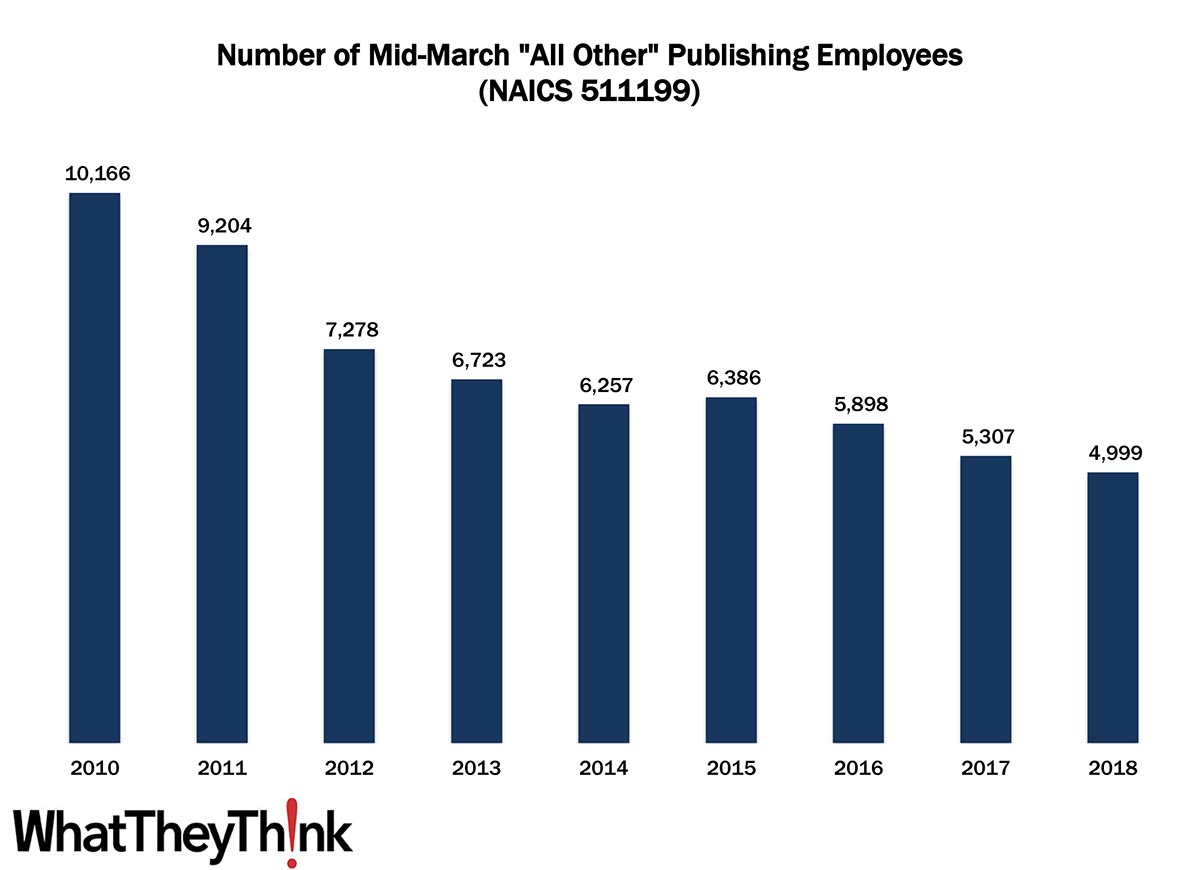
In 2010, there were 10,166 employees working in NAICS 511199 (All Other Publishers). This is a catchall category that includes publishers who specialize in printed postcards, art prints, calendars, maps and atlases, etc. Unfortunately, a lot of these print applications have been largely replaced by digital alternatives: printed and mailed postcards have been superseded by posting pictures of trips and events on social media sites, for example, while printed maps have almost entirely been replaced by GPS/GoogleMaps (except for historical or collectors maps). Art prints are increasingly produced digitally on inkjet equipment like Epson SureColor units, although wall and “page-a-day” calendars are still fairly strong, despite electronic calendar apps.
Next time, we’ll look at:
- 51913 Internet Publishing and Broadcasting and Web Search Portals
These data, and the overarching year-to-year trends, like other demographic data, can be used not only for business planning and forecasting, but also sales and marketing resource allocation.
This Macro Moment
The National Bureau of Economic Research (NBER)—the arbiter of “official” recessions—this week announced that the 2020 COVID-based economic recession lasted a mere two months. They say:
The committee has determined that a trough in monthly economic activity occurred in the US economy in April 2020. The previous peak in economic activity occurred in February 2020. The recession lasted two months, which makes it the shortest US recession on record.
In the NBER’s convention for measuring the duration of a recession, the first month of the recession is the month following the peak and the last month is the month of the trough. Because the most recent trough was in April 2020, the last month of the recession was April 2020, and May 2020 was the first month of the subsequent expansion.
In determining that a trough occurred in April 2020, the committee did not conclude that the economy has returned to operating at normal capacity. An expansion is a period of rising economic activity spread across the economy, normally visible in real GDP, real income, employment, industrial production, and wholesale-retail sales. Economic activity is typically below normal in the early stages of an expansion, and it sometimes remains so well into the expansion.
By the way, you may recall that a recession was once defined as two consecutive quarters of economic decline, but the NBER has since changed the (or, perhaps, its) definition to “significant decline in economic activity spread across the economy, lasting more than a few months, normally visible in real GDP, real income, employment, industrial production, and wholesale-retail sales.”
At any rate, as for last year’s recession, they add:
The committee decided that any future downturn of the economy would be a new recession and not a continuation of the recession associated with the February 2020 peak. The basis for this decision was the length and strength of the recovery to date.













